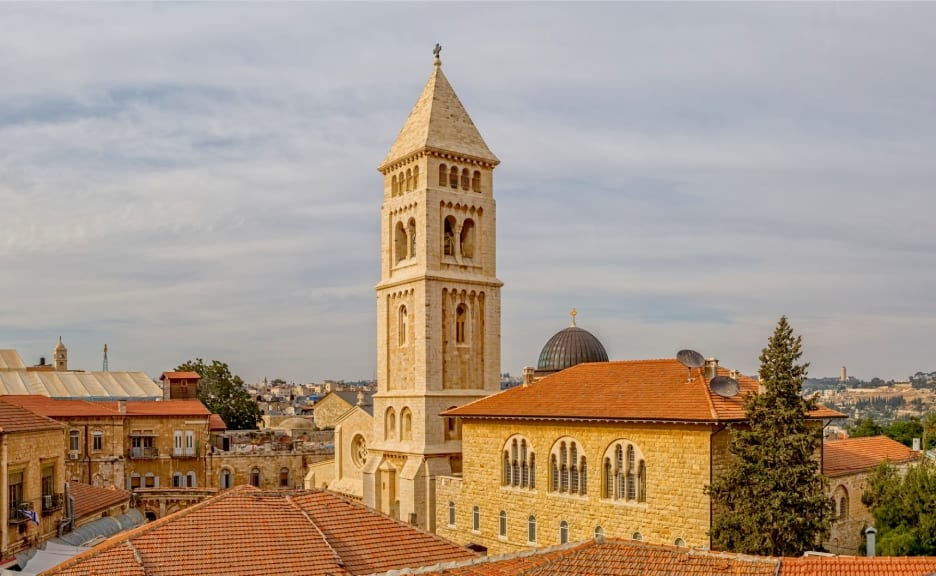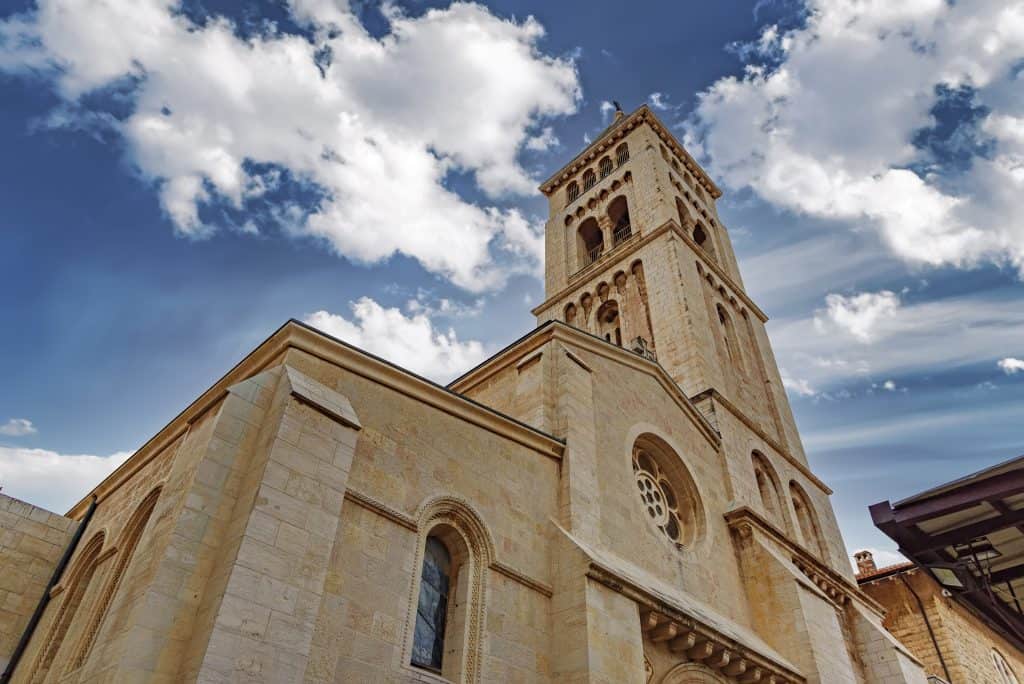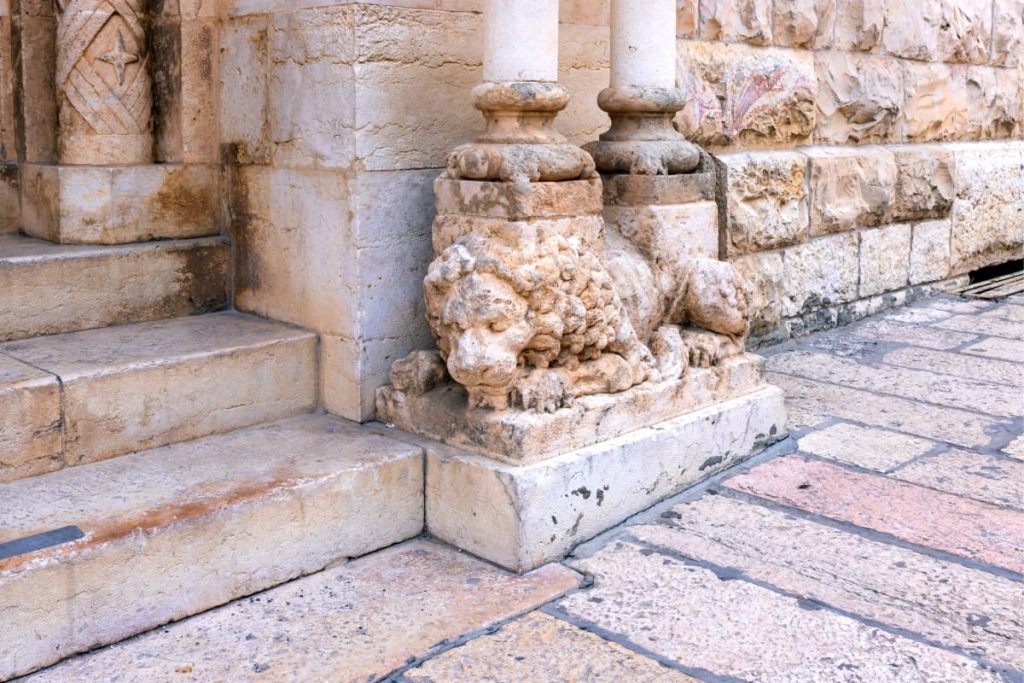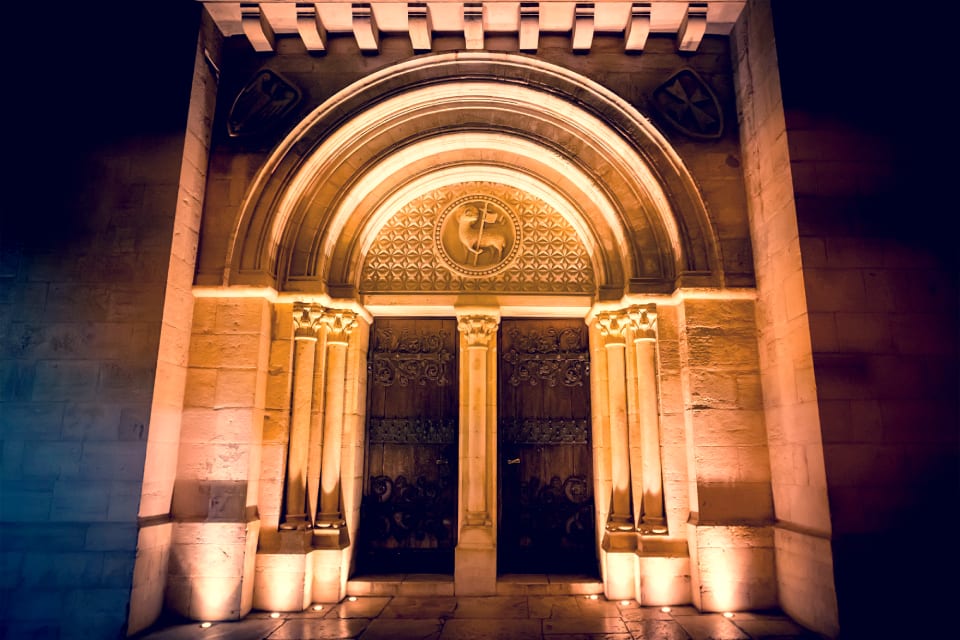The Lutheran Church of the Redeemer is the second Protestant church in Jerusalem (the first being Christ Church near Jaffa Gate). Built between 1893 and 1898 by the architect Paul Ferdinand Groth following the designs of Friedrich Adler. In addition the church was built on land given to King William I of Prussia (after 1870 Kaiser Wilhelm I); on the occasion of the latter’s participation at the inauguration of the Suez Canal in 1869 by Sultan Abdülhamid of the Ottoman Empire. Furthermore, the church was constructed from 1892 to 1898.

The location had been the site of the old church of St. Mary Minor. In 1898, Kaiser Wilhelm II traveled to Jerusalem to dedicate the new church personally. In fact, for the church’s dedication, the Kaiser entered the city on horseback through two specially made ceremonial arches. Now one was a gift from the Ottoman Empire, and one from the local Jewish community. Officially the church was dedicated on Reformation Day, 1898. Also, in the garden next to the church is a memorial marking the location of the crusader headquarters of the Order of the Knights of St. John.
Church of the Redeemer: Archaeological Park
So the archaeological park below the nave of the Church of the Redeemer opened in November 2012; it offers the possibility to experience more than 2,000 years of the history of Jerusalem by walking through it. Furthermore, the archaeological excavations conducted by Conrad Schick and Ute Wagner-Lux in 1893, and then Karl Vriezen from 1970 to 1974, have been prepared from 2009–2012 to present to visitors the different stages of development and building of Jerusalem. The adjoining cloister of the vicarage maintains a museum for more information and exhibits on the city’s history.

Church of the Redeemer: A Key site in the Christian Quarter
The church is at the end of the Christian Quarter, near an area of shops and cafes called Muristan. The site got its name because, in the Crusader period, it housed St. John’s Hospital, named after St. John of the Hospitaller Order. After the re-conquest of Jerusalem by the Muslims, the Muslims hospitalized their wounded in this hospital. They named the compound “Moristan,” a disruption of the Persian word “Bimarestan” – hospital.

In the Muristan complex, in addition to the Great Hospital, there were two churches – the Church of Santa Maria Latina and the Church of Santa Maria the Great (Majora). The smaller of the two, Santa Maria Latina, was founded in the 12th century by donations from merchants from Amalfi. It was built, apparently, under the supervision of the blessed Gerardus (or Gerard), who later was the founder of the Hospitaller Order. The Church of the Redeemer is built on the remains of this church, and parts of the church’s original building have been incorporated into the new church building.

Some More About the Church of the Redeemer
The church remains from the Crusader period stand out mainly at the northern (usually blocked) entrance to the church (opposite Alexander Nevsky Church). In fact, the decorations on the gate of the Crusader church depict the months of the year according to the agricultural cycle. Now the Church of the Redeemer’s builders did not consider scientific conservation when they incorporated the ancient gate into the new church building. So as a result, ancient photographs (such as that of Felix Bonfis shown below) must be used to identify what is new and what is ancient.

